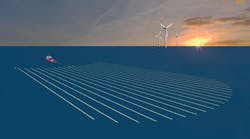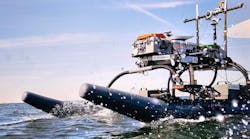Offshore staff
ABERDEEN, UK – The Industry Technology Facilitator (ITF) has launched a joint industry project (JIP) with Energie Beheer Nederland (EBN) and Petroleum Development Oman (PDO).
They aim to cut the time and costs for oil producers to determine whether gas fields are economically viable.
PETGAS III (Petrophysics of Tight Gas Sandstones) will continue work conducted by University of Leeds in northern England examining the petrophysical properties of tight gas sandstones.
It has resulted in a database of key petrophysical properties to speed up estimates of the properties of unknown samples based on their microstructure. It has also led to development of the PETMiner software to visualize this and other petrophysical properties data.
The database of the petrophysical properties of tight gas sandstones will be used to improve interpretation of wireline log data for characterization of tight reservoirs during exploration, appraisal, and production.
EBN and PDO are contributing £0.321 million ($0.42 million) and the project, now in its third phase, will run for three years. The program is also open to other participants.
Professor Quentin Fisher of University of Leeds, the principal researcher of the project said: “When oil producers are developing low permeability objectives, the petrophysical properties largely determine whether gas fields are economically viable. Current methods used in the industry are both expensive and time consuming.
“The PETGAS research, which is now in its third stage, has been transformative in creating a workflow, database, and data-mining software that allows operators to reduce the cost and time to estimate to petrophysical properties of tight gas sandstone prospects.”
ITF CEO Dr. Patrick O’Brien said: “The work of the PETGAS JIP could in time play a key role in unlocking the significant, yet untapped, potential of stranded gas resources in the southern North Sea and beyond.”
Results of PETGAS I and PETGAS II have been used by industry to justify drilling new prospects and to improve understanding of the controls on gas and water production in existing fields, influencing appraisal and production strategies.
PETGAS III project will extend the database by a further 15 samples per sponsor and continue the extensive special-core-analysis test work on a further seven samples per sponsor.
09/14/2016
Share your news withOffshoreat [email protected]




